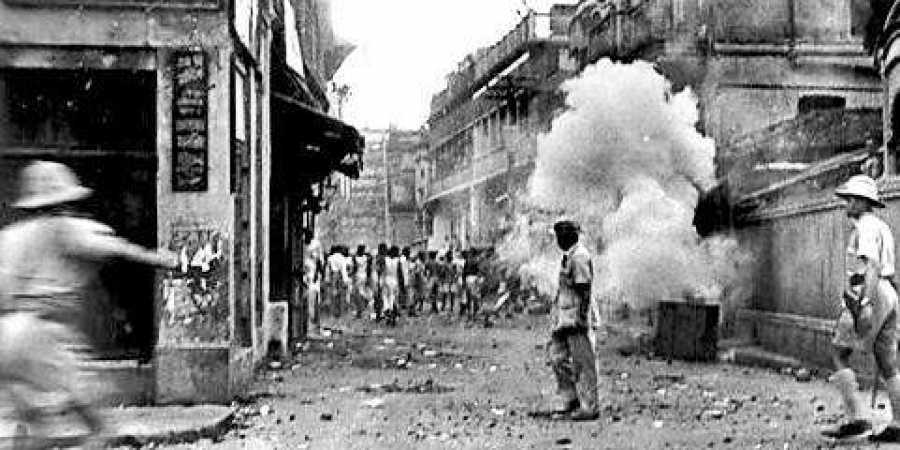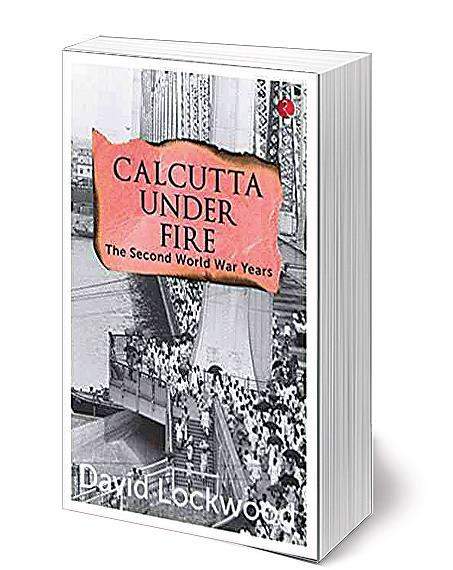The year 1942 was a landmark year in terms of political and military changes, especially in East Asia.

Calcutta in post-World War II days
Calcutta Under Fire: The Second World War Years
By: David Lockwood
Publisher: Rupa
Pages: 294
Price: `295

The year 1942 was a landmark year in terms of political and military changes, especially in East Asia. Japan, which had entered World War II spectacularly by bombing Pearl Harbour in December 1941, had—within less than a year—successfully invaded Malaya, Hong Kong, Singapore and Burma. In each of these territories, the defending (and now defeated) forces had been the British.
With the Japanese occupying Burma, sitting literally on the doorstep of India, it was unsurprising that by late 1942, fears of a Japanese invasion of India, or at least of its eastern and coastal stretches, should be widespread.
Yet, there were other factors to be considered. Political, social, and military factors, and factors regarding less tangible ideas, such as the need to save face, or to put up a brave front. There was the Indian national movement, there was the growing doubt among many Britishers themselves regarding the future of India as part of the Empire. There was the (natural, given what had happened in Burma and elsewhere) fear among Indians that the British would be incapable of defending India against the Japanese.
David Lockwood examines all of these and more in an attempt to explain the circumstances and events that shaped India during World War II, especially around the tumultuous year of 1942, when the Japanese bombed Calcutta and sent thousands fleeing the city in panic.
But merely looking at the Japanese bombing of Calcutta in isolation would not make a complete book, so Lockwood instead spreads his net wide to encompass events, ideologies, movements, policies and more. He examines the theory of hegemony as an intrinsic part of British imperialism, and from there goes on to discuss how the Congress’s policies were tailored towards a counter-hegemony.
There is a detailed discussion of how the Congress’s policies underwent changes; of the work the Congress did to mobilise the general populace in what was essentially a counter-hegemonistic movement; of the role played by radio (including the Congress’s illegal, underground radio broadcasts as well as Subhas Chandra Bose’s broadcasts from Berlin); and of rising discontent and nationalism among the Indians in the British Indian military and civil services.
The final picture is a complex but intriguing one of the different forces that not only shaped India in 1942, but which eventually led to independence. Lockwood manages to present interesting insights into the considerations that made the British, the Congress, and the general Indian public (both urban as well as rural) act as they did.
Lockwood’s research is extensive (he even manages to present the Japanese side of it: did they really intend to invade India and make it part of a Japanese Empire?). There are some delightful bits of trivia, too (the thought of an impending Japanese invasion seems to have encouraged some Indians, who looked on the approaching Japanese armies more as liberators than conquerors, to take some very surprising steps, such as learning Japanese). While Lockwood’s style of writing may at times seem more geared towards an academic audience than a layperson, the book is an invaluable resource for understanding India during World War II.
source: http://www.newindianexpress.com / The New Indian Express / Home> Lifestyle> Books / by Madhulika Liddle / Express News Service / February 24th, 2019